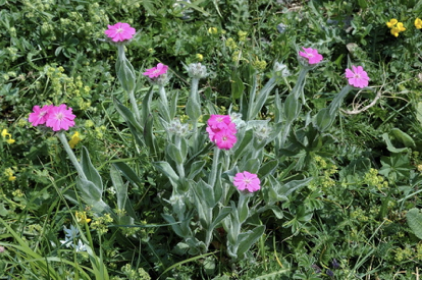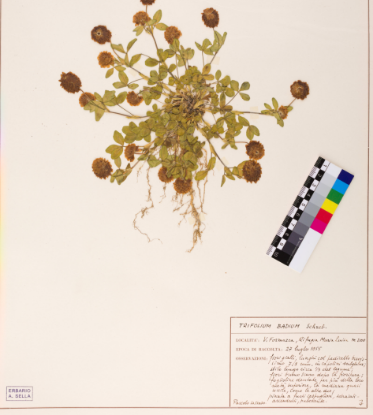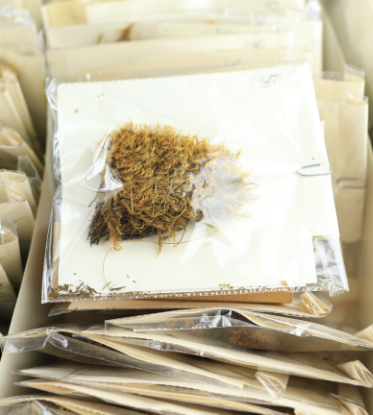Botanica
Botanica
Tra le specie vegetali in lista rossa, redatta dall’Unione Internazionale per la Conservazione della Natura (IUCN) per le categorie a rischio di estinzione, una vive sulle Alpi Marittime italo-francesi.
Cos’è? Perché potrebbe estinguersi?
Iniziamo col Perché
Il Piemonte, regione con la più alta diversità floristica d’Italia, conta diverse specie minacciate d’estinzione dovute a cambiamenti ambientali provocati dalle attuali dinamiche socio-economiche e di utilizzo del suolo ad esse associate.
Ora vediamo di cosa si tratta
Si tratta di un “relitto glaciale”, sopravvissuto fino ai nostri giorni in stazioni di rifugio, adattandosi al particolare habitat delle fessure su pareti silicee verticali.
Per decenni è stata considerata un’entità mitica e immaginaria; nessuno, infatti, riusciva a trovarla, finché fu rinvenuta nel 1823.
È un essere delicatissimo e molto raro, che cresce dai 1950 ai 3200 metri di quota. Ecco a voi la straordinaria Saxifraga florulenta Moretti!
Etimologia del binomio scientifico
Saxifraga, da sáxum = sasso e da frángo = rompere.
Cresce su rocce, dove riesce a insinuare le radici in piccole fessure e, crescendo, a spezzare le pietre.
Florulenta = fiorita
Moretti = Scoperta al Colle della Finestra, fu descritta per la prima volta da Giuseppe Moretti, nell’opera Tentativo diretto ad illustrare la sinonimia delle specie del genere Saxifraga indigene del suolo italiano, in Giornale di fisica, chimica e storia naturale, vol. 6, Pavia, 1823, pp. 460-466.
Nome volgare: Sassifraga dell’Argentera; in francese Saxifrage à nombreuses fleurs, Saxifrage à mille fleurs o Saxifrage du Mercantour
Interesse conservazionistico:
eletta pianta simbolo del Piemonte dalla Società Botanica Italiana (Garbari F., 20191);
in Italia è vulnerabile (IUCN Comitato Italiano, Rossi et al., 20132);
in Regione Piemonte è a protezione assoluta (L.R. 32/1982);
in Francia è LC = a minor rischio (IUCN, Comitato Francese, 2018).

Curiosità
Si riteneva fosse estinta, ma fu ritrovata fiorita sui pendii rocciosi della Rocca dell’Argentera, a circa 2500 m s.l.m., dal botanico alpinista Paolo Ballada di Saint Robert durante l’ascesa della Cima dei Gelas, nel 1864. Lo stesso la rinvenne, nel 1865, anche sul versante del Monte Orosa (canalone di Lourousa), località oggi assimilata al gruppo della Cima Argentera, a circa 10 km a nord-ovest dalla precedente località.
Saint-Robert sollecitò la platea botanica elencando alcune curiosità caratteristiche di questa pianta, chiedendosi come fosse riuscita a sopravvivere alle glaciazioni.
Dopo un lentissimo accrescimento, che dura dai 30 ai 75 anni, tempo durante il quale la pianta vive sotto forma di rosetta basale, fiorisce e disperde i suoi semi una volta nella vita.
Il MRSN custodisce il campione di Saxifraga florulenta raccolto da Saint Robert nel 1865 sulle Alpi Marittime.

+95.000
Esemplari tra campioni essiccati e immagini scientifiche
31.000
Esemplari essiccati di flora spontanea del Piemonte
36.900
Esemplari, di cui 2.584 piemontesi, di piante vascolari, funghi, licheni e briofite
22.610
Esemplari di spermatofite, suddivisi tra Flora Mondiale e Campanulacee (8.980 di Piemonte e Valle d'Aosta)
3.500
Campioni della spermatoteca-carpoteca (semi e frutti) (3D)
36.900
campioni della xiloteca (legno) (3d)
Da che cosa sono composte le collezioni della sezione Botanica del MRSN?
Le collezioni comprendono circa 95.000 elementi fra campioni essiccati e immagini scientifiche.
Da quali esemplari sono composte le collezioni di vegetali essiccati?
Le collezioni di vegetali essiccati sono costituite da piante a seme, felci, muschi, licheni, funghi e alghe, in parte allestiti su fogli d'erbario e in parte conservati come elementi tridimensionali.
I campioni rappresentano la flora spontanea e coltivata di tutto il mondo; in parte derivano da raccolte in campo, in parte da donazioni, scambi internazionali e acquisti.
Le collezioni sono iscritte dal 1984 all'indice mondiale degli Erbari come Herbarium MRSN.

Quali collezioni compongono l'Erbario del museo?
a) Collezioni chiuse [senza incremento]
- Abbà - Piemonte (circa 10.000 esemplari di piante vascolari)
- Sella - Europa (2.539 esemplari, di cui 1.129 dal Piemonte, di piante vascolari)
- Bono (Istituto Missioni Consolata) - Flora mondiale (circa 8.000 esemplari: piante vascolari, funghi, licheni, briofite)
- Erbario Chartreuse 1899 - Francia (634 esemplari di piante vascolari)
- Lanza - Italia, Europa (9.852 esemplari, di cui 163 dal Piemonte, di piante vascolari)
- Val Sangone - Piemonte (5.275 esemplari di piante vascolari)
- Erbari di botanici piemontesi (A. Soldano, M. Pascale: più di 3.200 campioni di piante vascolari)
- Donazione dell'Ente di gestione delle Aree protette del Po piemontese (2.324 campioni di piante vascolari)
- Donazione del Museo di Storia Naturale e delle Apparecchiature Scientifiche "Don Bosco" del Liceo Valsalice di Torino (circa 3.500 campioni di piante vascolari)
b) Collezioni aperte [incrementabili]
- Collezione Piemonte-Valle d'Aosta (circa 5.000 campioni di flora vascolare raccolti in Piemonte e Valle d'Aosta);
- Erbario Generale della Flora vascolare mondiale (circa 13.000 campioni provenienti dai cinque continenti e dalle altre regioni italiane);
- Collezioni minori di Briofite, Licheni, Funghi, Alghe, frutti, semi e legni come rappresentate nel grafico sopra.

La collezione di immagini scientifiche
La collezione di immagini scientifiche è costituita da migliaia di diapositive, immagini digitali, acquisizioni da steroscopio e fotografie di campo scattate durante la partecipazione a programmi di ricerca.
Perché sono utili?
Per la divulgazione e analisi dei particolari è indispensabile un ricco e complesso repertorio di immagini botaniche.

Approfondimento
Paolo Ballada di Saint Robert
Il Conte Paolo Ballada di Saint Robert (Verzuolo, 1815 – Torino, 1888), militare e alpinista, nel 1857 lasciò l’esercito con il grado di tenente colonnello per dedicarsi al mondo della scienza: i suoi studi in campo balistico e dell’artiglieria, delle scienze naturali, dell’ipsometria, della termodinamica, della meccanica sono testimoniati da numerose pubblicazioni. Si interessò anche di astronomia e letteratura. Nell’agosto 1863 prese parte alla scalata del Monviso – la prima effettuata da una cordata di alpinisti italiani – insieme al fratello Giacinto, al biellese Quintino Sella e al deputato calabrese-napoletano Giovanni Barracco. A quell’avventura fece seguito, qualche mese dopo, la fondazione del Club Alpino Italiano.
Nel campo delle scienze naturali, Saint Robert si interessò alla botanica e all’entomologia: durante l’ascesa della Cima dei Gelas, primo ad effettuarla nel 1864, segnalò la presenza di Saxifraga florulenta Moretti, ritenuta estinta.
All’interno della Torre, oggi visitabile, fatta da lui edificare a Castagnole delle Lanze, creò un museo zoologico. L’iniziativa, ulteriore dimostrazione della sua passione per i piccoli animali, gli valse il soprannome ‘l cunt di babi (il conte dei rospi).
Alcuni anni dopo la sua morte, l’erbario e la collezione entomologica furono donati (1897) al “Museo di Storia Naturale Don Bosco e delle apparecchiature scientifiche” del Liceo Salesiano Valsalice di Torino.
Dal 2023 l’erbario è conservato presso il MRSN ed è in corso di studio.
Socio dell’Accademia Nazionale dei Lincei, della Reale Accademia delle Scienze di Torino, della Società Italiana delle Scienze dei XL di Modena e del Regio Istituto Lombardo, Saint Robert fu decorato della Croce al merito di Savoia. In suo onore sono stati dedicata a Ovest del monte Gelas la cima St. Robert (2917 m) e il colle omonimo.
Fu uno dei primi scienziati a interessarsi alla fusione dei ghiacciai: già nel 1883, infatti, affermava che l’uomo è il principale responsabile del ritiro dei ghiacciai.
ANEDDOTO BOTANICO
Protagonisti principali: Augusto Gras e Paolo Ballada di Saint Robert
Dove e quando: durante la salita sulla Torre d’Ovarda, agosto 1872
Co-protagonisti: Giovanni Strüver e Michele Lessona
Saint Robert aveva attaccato, su una foglia di Carlina acanthifolia All., un biglietto che recava la seguente scritta: «All’amico Gras, S. Robert». Agli occhi del destinatario si trattava di un fiore talmente sgradevole da essere così descritto: «Deforma pianta dal lurido capo, a foggia d’una testa di Medusa», presenta un ricettacolo sproporzionatamente grande, è priva di fusto e assomiglia a «un letto nuziale senza piedi; le nozze vi si compiono senza pompa, senza sfarzo, senza colori … Fra le piante che nel volgo metterebbero più ribrezzo è da annoversarsi fuor dubbio la sovraccennata specie di Carlina».
Gras prese a congetturare a proposito del significato di quel biglietto: probabilmente si nascondeva un enigma o un indovinello, dal momento che, secondo la sua opinione, gli uomini del temperamento del conte non lasciavano nulla la caso, nemmeno una innocente burla.
Quando, nel corso dell’ascesa, si rincontrarono, Saint Robert donò a Gras un mazzo di fiori, composto dal ben più gradevole Lychnis Flos Jovis Lamck, svelando, in tal modo, l’arcano: con il primo fiore il conte aveva inteso rappresentare «le punzechiature, i motteggi, le mordaci ironie» tipiche del carattere di Augusto Gras, mentre il mazzo di fiori simboleggiava il «sentimento di salda e leale amicizia» che legava i due naturalisti-esploratori. (Gras A. in Saint Robert P. B. et al., 1873).


INFORMAZIONI
Quante cose si possono imparare sul mondo naturale? Scoprilo al Museo Regionale di Scienze Naturali!



































